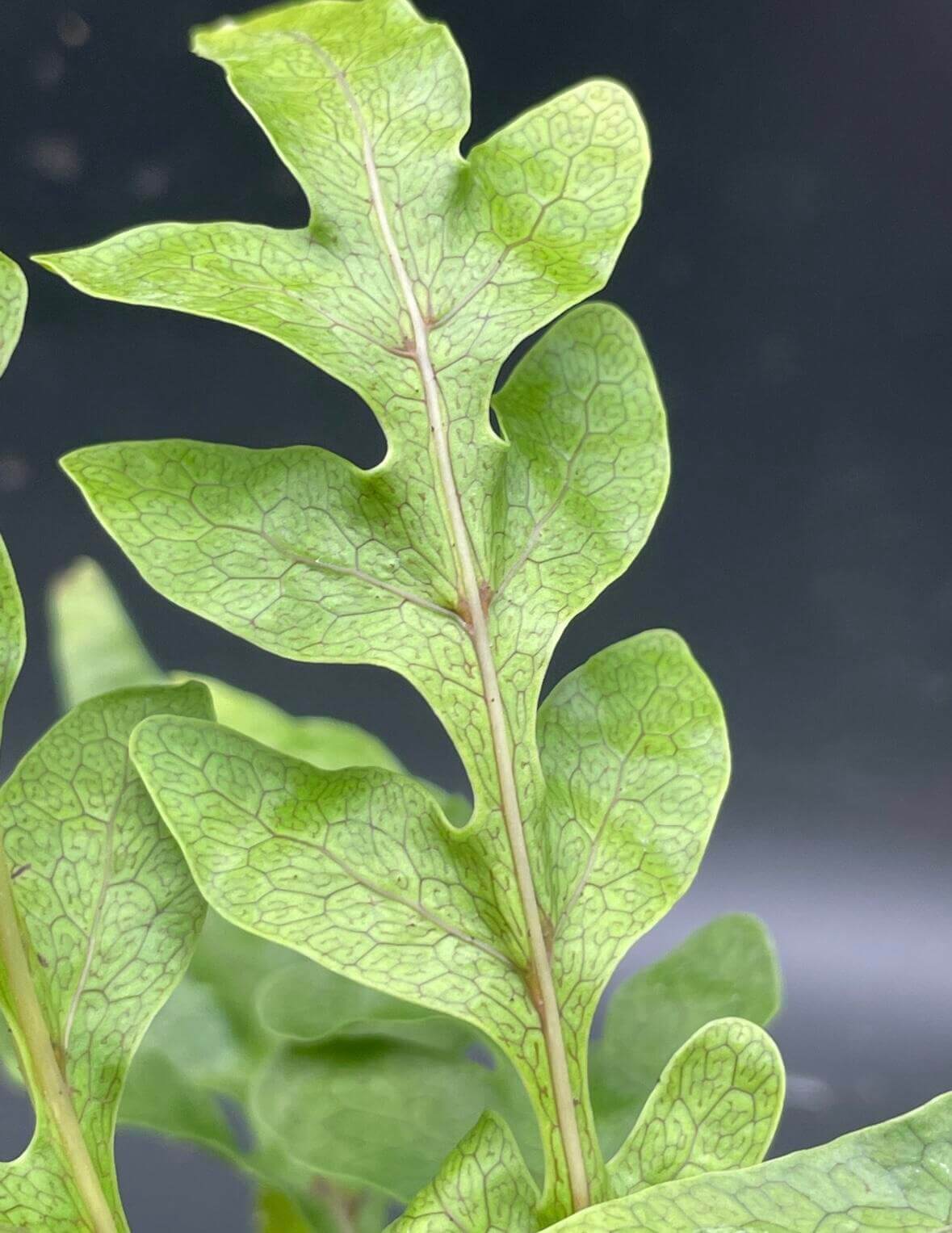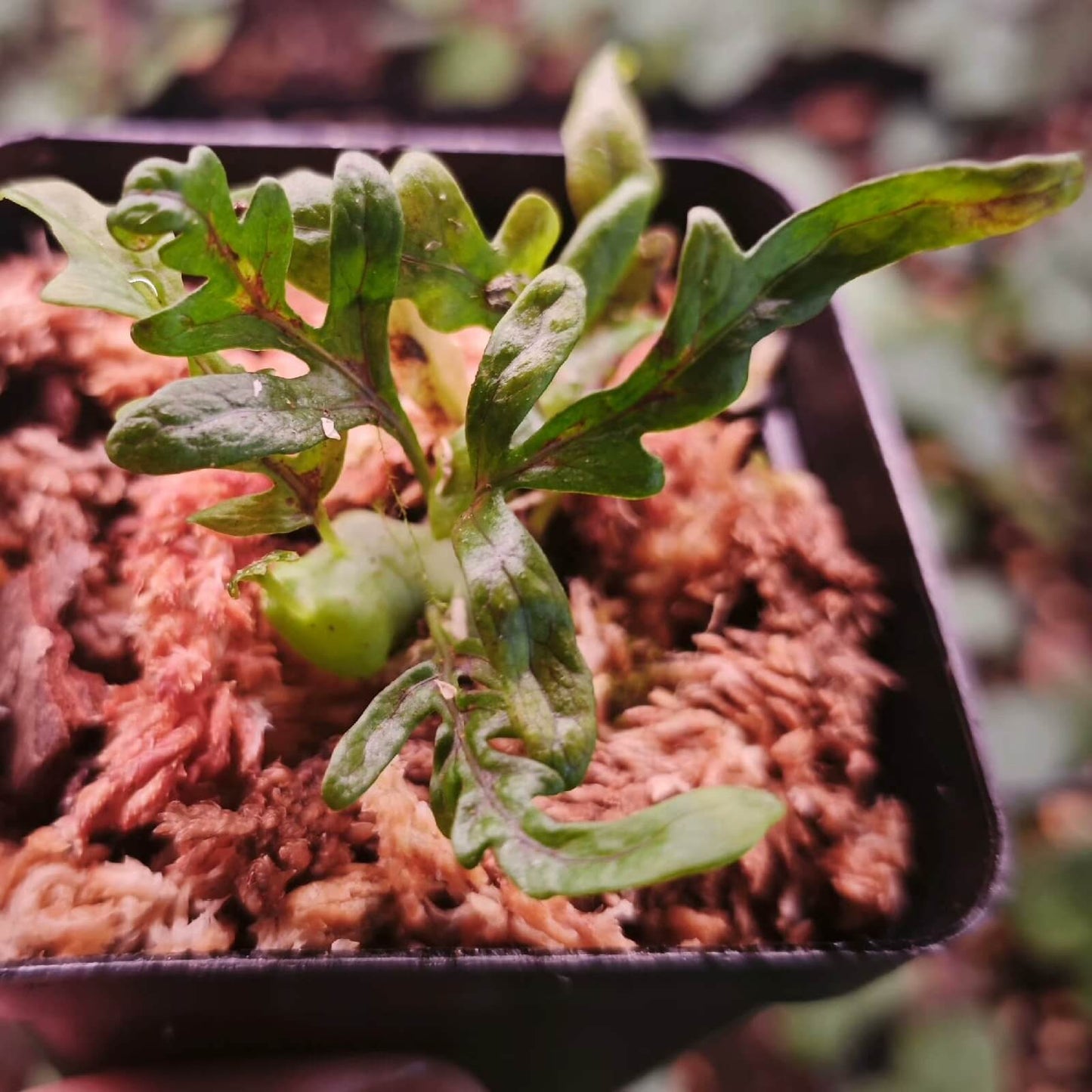Begin With Plants
Ant Fern (Lecanopteris darnaedii)
Ant Fern (Lecanopteris darnaedii)
Couldn't load pickup availability
Ant Fern (Lecanopteris darnaedii) is a fern species within the genus Lecanopteris, part of the family Polypodiaceae, subfamily Microsoroideae. It is endemic to Central Sulawesi (Indonesia), primarily found in mid-montane forests at elevations of 2,300–2,500 m.
Features:
Morphology
-
The fern features a creeping, hollow rhizome approximately 3.5–4.5 cm in diameter, with two vertically arranged gallery systems that serve as ant domatia. The rhizome is tough, intricately branched, and densely covered in sharp spines (2–3 mm long).
-
Fronds are deeply pinnatifid, leathery (coriaceous), dark green, and measure between 20–80 cm in length. Sori are small (~3 mm), circular, and located on reflexed, extra-marginal lobes.
Ant Symbiosis
-
Lecanopteris darnaedii is a myrmecophyte—it forms a facultative mutualistic relationship with ants. The fern’s hollow rhizomes provide ants with shelter, while the ants deposit organic waste and debris inside, supplying the plant with additional nutrients and water through absorptive walls.
-
Though dependent on ants for optimal nutrition and protection, the relationship is facultative—both plant and ants can survive without one another.
Care Tips:
Light & Placement
-
Provide bright, indirect light—similar to its natural exposure near forest canopy. Avoid harsh direct sun that could scorch the fronds. If growing indoors, a bright east- or south-facing window with filtered light works well.
Substrate & Mounting
-
This species thrives as an epiphyte. Use a mounting method or a well-draining substrate such as orchid bark, sphagnum moss, or tree fern fiber. A mix (e.g., orchid bark with sphagnum or perlite at ~1:1 ratio) helps replicate natural conditions.
Humidity & Watering
-
Maintain high humidity, ideally 60–90%. Regular misting or a humidity tray can help.
-
Keep the substrate consistently moist but not waterlogged—soak thoroughly and allow slight drying at the surface before re-watering.
Temperature
-
Mimic montane forest conditions with cool to moderate temperatures: ideally between 18–28 °C (64–82 °F).
Ants: Optional but Beneficial
-
Though cultivation doesn't require ants, introducing non-stinging ants or allowing a colony can encourage more robust growth by providing natural nutrient input and potential protection.
Fertilization
-
Use a light, balanced fertilizer diluted to half or lower strength. Orchid fertilizer works well. Apply sparingly during active growth phases.
Propagation
-
Propagate by rhizome division: when the rhizome spreads to the edge of its container, attach another pot next to it and allow it to grow in. Once established, sever and pot the new section carefully.
Share



